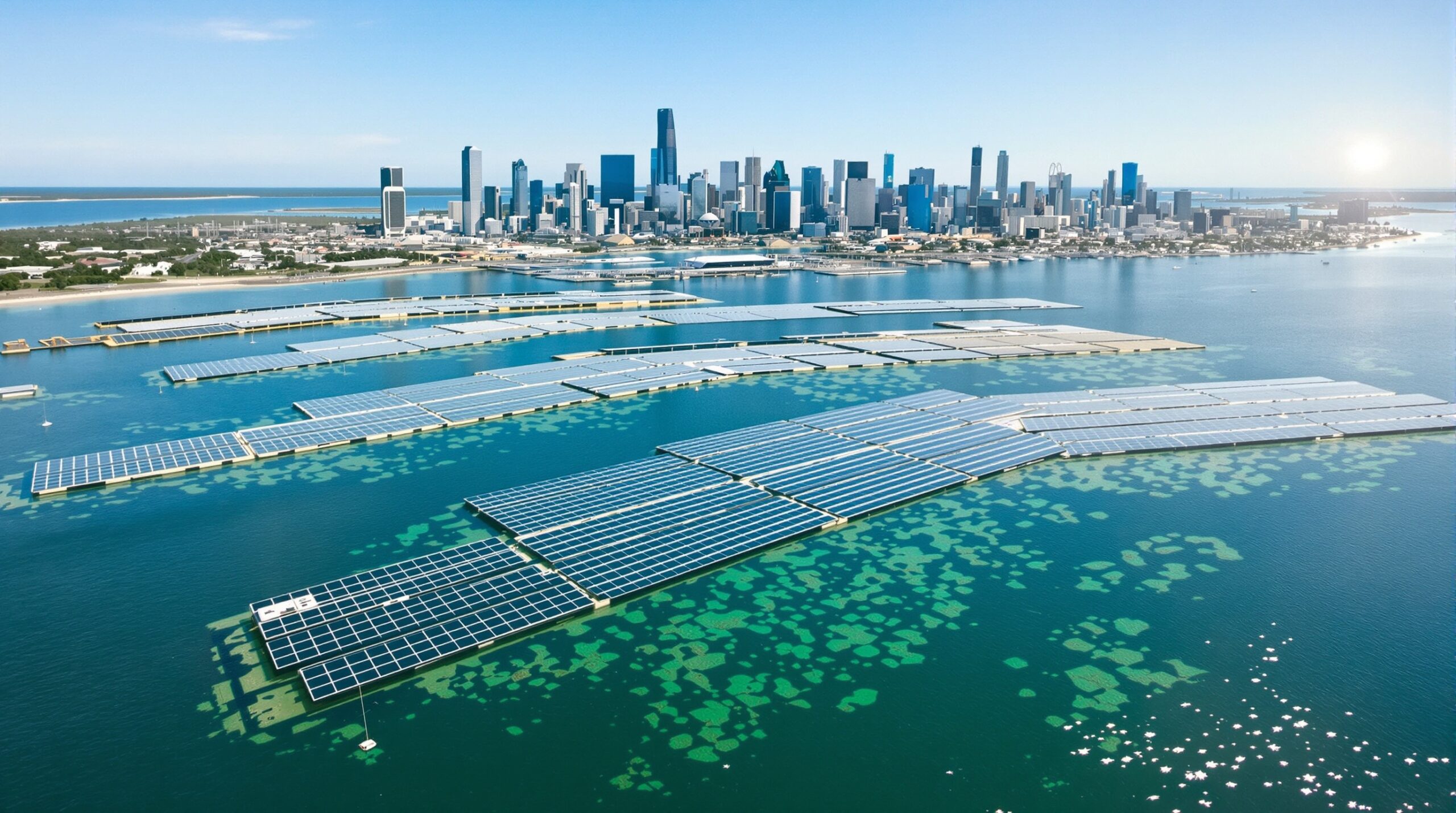Rising power demand and frequent weather disruptions have forced coastal cities to seek out innovative solutions. Floating solar farms have emerged as a promising technology. Urban centers worldwide now deploy solar panels on water to help stabilize their strained power grids.
The Growing Energy Challenges Coastal Cities Face
Coastal cities often grapple with fluctuating electricity loads. Extreme weather events, such as hurricanes and heatwaves, put added stress on power delivery systems. Additionally, many city grids rely heavily on fossil fuels, contributing to pollution and greenhouse gas emissions.
Population growth and new infrastructure projects increase energy consumption in many cities. Traditional land-based power plants struggle to keep pace. As sea levels rise, available land becomes more scarce, complicating the construction of new electric facilities.
Why Floating Solar Farms Are Gaining Interest
Floating solar farms, also known as floatovoltaics, involve placing photovoltaic panels on platforms atop bodies of water. This approach provides a sustainable energy alternative that does not compete for valuable urban land. Instead, installations float on reservoirs, lakes, harbors, and even sheltered coastal areas.
These systems reduce evaporation from water bodies, which helps cities facing water scarcity. The water beneath also cools the solar panels, increasing efficiency compared to land-based installations. This dual benefit makes floatovoltaics an attractive investment for municipal leaders.
Case Studies: Leading Cities Implement Floating Solar
Singapore, with limited land resources, launched one of the world’s largest floating solar farms on the Tengeh Reservoir in 2021. The site’s 122,000 solar panels generate enough clean energy to power water treatment facilities. This project significantly reduces Singapore’s dependence on imported natural gas.
Los Angeles tested a 1.6-megawatt project on the city’s reservoirs to offset summer grid strain and prevent water evaporation. The panels also shield drinking water from sunlight, inhibiting algae growth and improving water quality. This multipurpose design maximizes available resources.
Mumbai, a coastal megacity, has plans to anchor solar arrays offshore in protected waters. Clean energy from these installations will supplement the city grid during peak demand periods. The local government estimates that floating solar could eventually supply up to 20% of Mumbai’s urban power needs.
The Engineering Behind Floating Solar Systems
Engineers design strong, modular floats that support solar panels and withstand wind, waves, and variable water levels. Most platforms use ultraviolet-resistant polymers or composite materials, extending their service life in harsh marine environments. Anchoring and mooring systems prevent panels from drifting from strong currents or storms.
Advanced floating farms use monitoring sensors to track panel output, detect damage, and optimize panel angles for sunlight exposure. Power cables run safely underwater or above the surface back to shore. Some projects also incorporate battery storage units, which store excess solar energy for nighttime or cloudy periods.
Environmental Considerations for Floatovoltaic Growth
Floating solar systems must avoid negative impacts on aquatic habitats. Carefully selected sites prevent shading effects on aquatic plants and animals. Environmental assessments help planners avoid disrupting fish breeding grounds, bird nesting areas, or recreational waters.
Field studies from early adopters report little to no negative effect on water quality or local biodiversity. In some cases, panels even suppress algal blooms by blocking excess sunlight from the water’s surface. Ongoing research assesses long-term impacts as the number of installations grows globally.
Floating Solar’s Critical Role in Grid Stabilization
Cities experiencing rolling blackouts or voltage drops during peak hours find relief from floating solar farms. These installations add renewable energy close to areas with high consumption, minimizing transmission losses from distant power plants. Quick installation times mean cities can bring capacity online within months rather than years.
Floatovoltaics work well with modern smart grids. Operators can ramp up power output or store solar energy during the day. At night, battery storage releases electricity back into the grid, helping balance supply and demand. This flexibility boosts the reliability of municipal power systems.
The Economic and Social Benefits
Installing floating solar systems creates high-tech and construction jobs for local workers. Cheaper, cleaner energy helps lower electricity costs for households and businesses. Reducing reliance on energy imports gives cities greater control over their energy destiny.
These projects also serve as symbols of sustainability. Cities showcase their commitment to renewable energy innovation and climate action. Public support grows when citizens see visible eco-friendly infrastructure on their waterways and coastlines.
Challenges and Future Outlook
Despite many benefits, cities face challenges in scaling up floating solar. Unique engineering, maintenance, and permitting require tailored solutions. Saltwater corrosion and severe storms demand robust design and regular inspections. Collaboration between energy companies, local governments, and environmental groups remains critical for long-term success.
Renewable energy advocates believe these obstacles can be overcome. As the costs of solar panels and floating structures drop, more city leaders are likely to adopt this solution. Advances in battery storage and smart grid technology will only strengthen floating solar’s impact.
Coastal cities facing climate risks must continue to innovate. Floating solar farms offer a reliable, environmentally conscious method to deliver clean energy while protecting fragile coastlines and making power grids more resilient.
Conclusion: Floating Solar as a Beacon of Hope for Urban Energy
Floating solar projects allow coastal cities to address energy demand and climate challenges simultaneously. They provide grid stability without demanding valuable land or harming the environment. As global cities test and expand these farms, floating solar will anchor the future of urban renewable energy.

